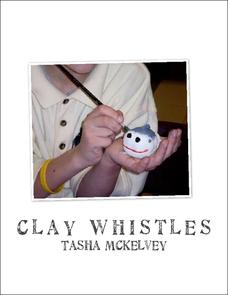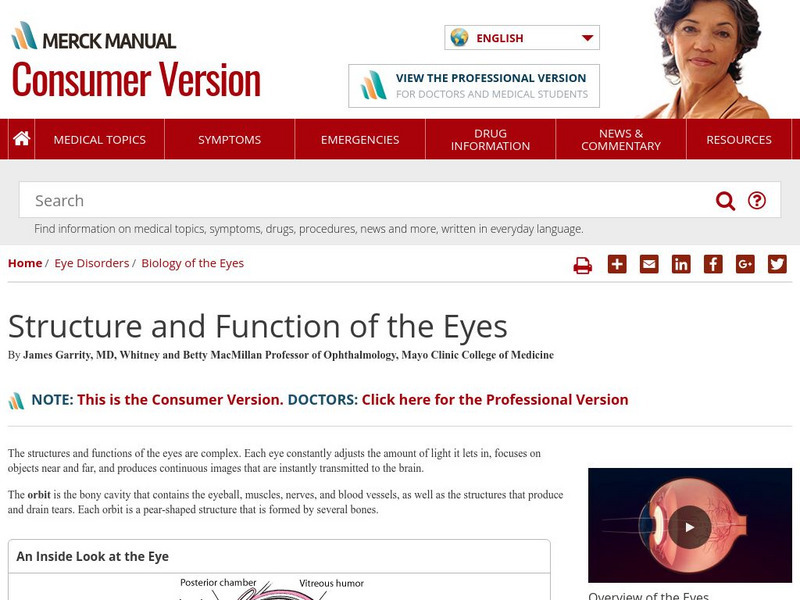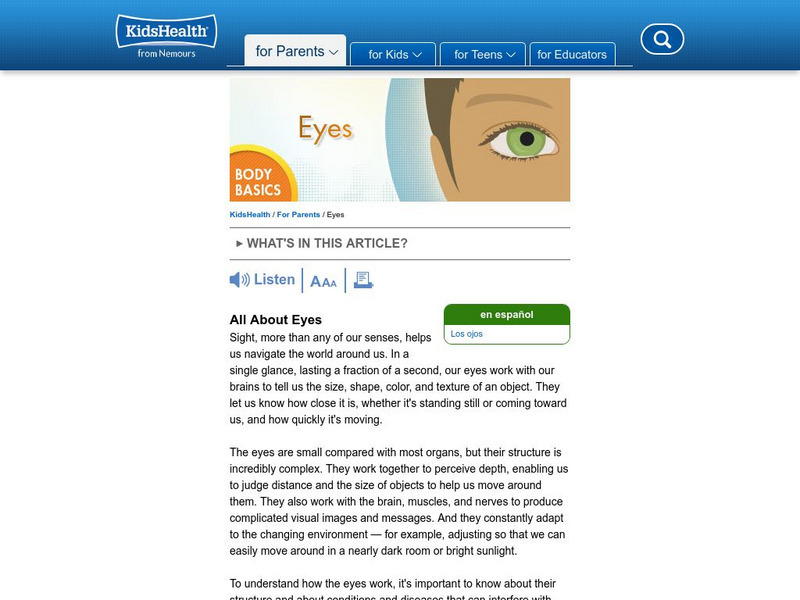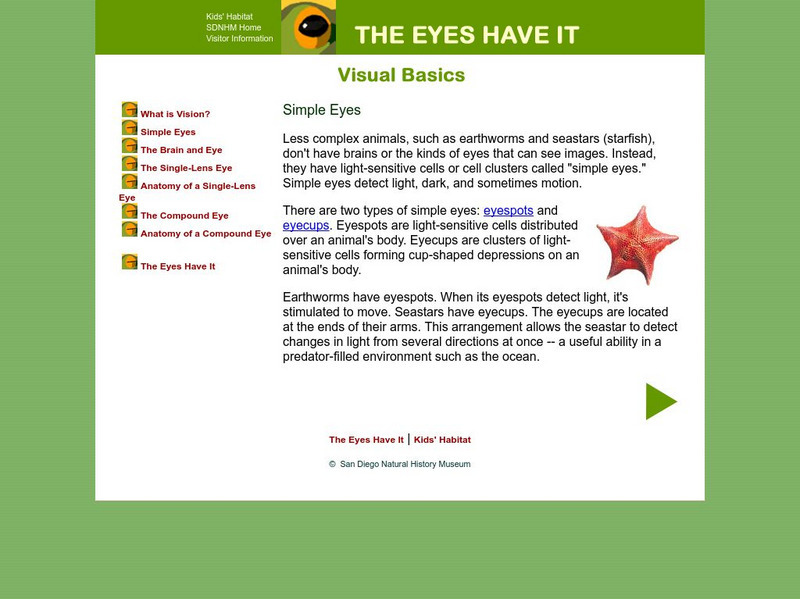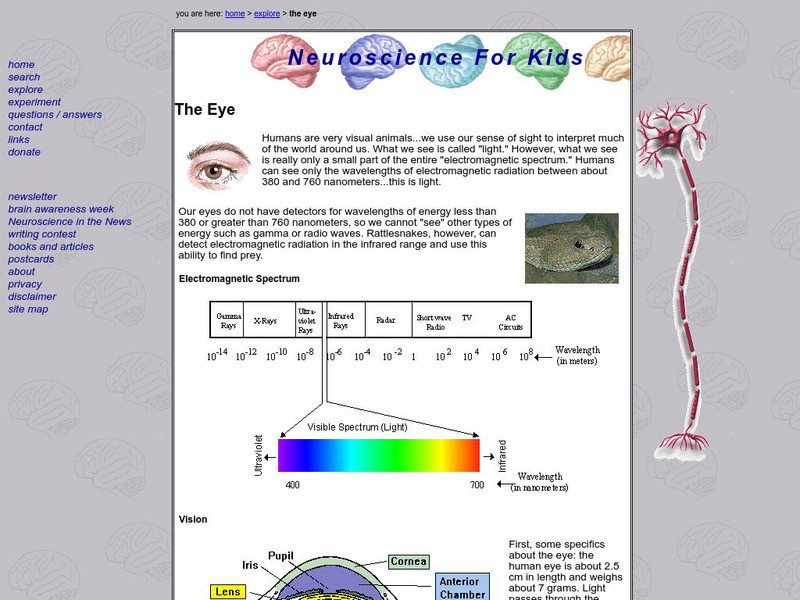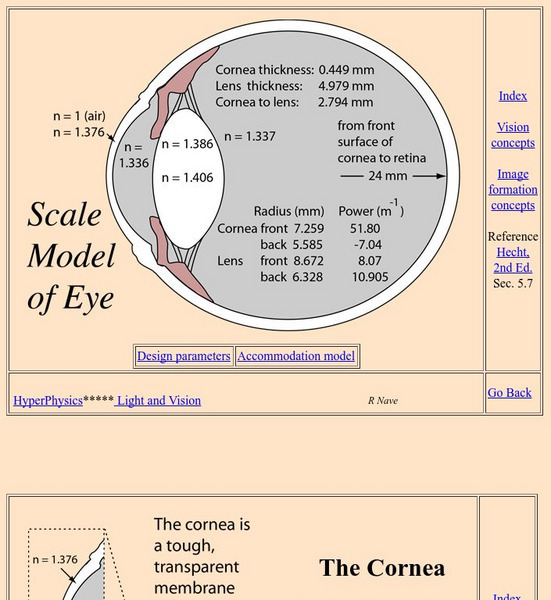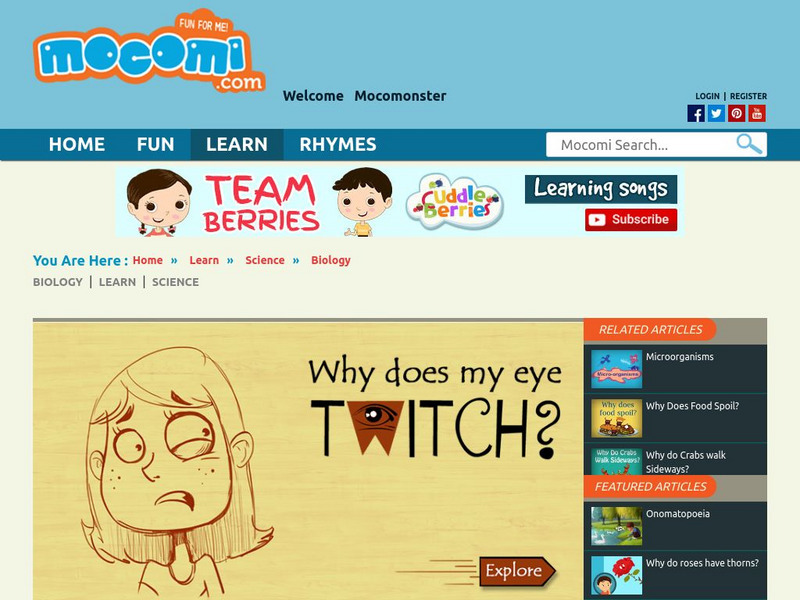Ask a Biologist
The Many Faces of Ants
Though they be but little, they are fierce! Young biologists read about eight different species of ants, and discover how the anatomy of their heads can explain the way they live and what they eat.
Tasha McKelvey
Clay Whistles
Create clay whistles with your elementary or middle school students. The project is outlined in great detail here, complete with step-by-step photographs, finished examples, a materials list, student handouts, and a rubric. Students...
Curated OER
Arlo's War by Frank Brennan
In this reading selection worksheet, students read a 9 page selection entitled, "Arlo's War," by Frank Brennan. There are no directions given with the reading selection.
Merck Sharp & Dohme Corp.
Merck Manual: Structure and Function of the Eye
This site provides a an excellent guide to the structure and function of the human eye. Content addresses how the eye is built, as well as how it works to translate light and shadow into sight. A diagram illustrating the various parts of...
Curated OER
Kids Health: Eyes
The anatomy of the eye, how it functions to allow us to see, and vision problems that can develop are described.
National Institutes of Health
National Eye Institute: The Cornea
This government site explains the function and structure of the cornea and includes a diagram with labeled parts of the eye.
San Diego Natural History Museum
San Diego Natural History: Kids' Habitat :The Eyes Have It Compound Eye
Invertebrates are known to have compound eyes. Learn the anatomy and function of this kind of eye.
San Diego Natural History Museum
San Diego Natural History: Kids' Habitat :The Eyes Have It Simple Eyes
Earthworms and other simple animals like the starfish have a different eye structure known as a 'simple' eye.Learn about its anatomy and how it functions.
University of Washington
Neuroscience for Kids: The Eye
Easy to understand description of the parts of the eye and their functions. Lots of labeled illustrations. At the bottom of the page additional content includes games, quizzes, lesson plans and activities about vision.
Georgia State University
Georgia State University: Hyper Physics: Scale Model of Human Eye
A scale model of the human eye is shown. Information about the parts of the eye and the common defects that result from its malfunctioning.
The Tech Interactive
Tech Museum of Innovation: Inside Your Eyeball
After discussing the basics of the eye, this site explores the various functions of the eye and parts from the optic nerves to the retina. Cones, rods, and the brain are also discussed.
PBS
Pbs Learning Media: Life's Grand Design
Are nature's complex forms evidence of "intelligent design"? In this Evolution essay, biologist Kenneth Miller explains how the processes of evolution account for complex structures such as the human eye.
Mocomi & Anibrain Digital Technologies
Mocomi: Why Does My Eye Keep Twitching?
Learn about what causes eye twitching and some interesting superstitions in different cultures.
University of Utah
University of Utah: learn.genetics: Foundational Toolkit Genes
Explains how the eyes of very diverse species have a common genetic ancestry.
Other
Iris Pigmentation Research Info
The focus of this site is the anatomy of the eye. The site include diagrams and slides showing details at the light microscope and electron microscope level.
Other
The Flow of the Aqueous Humor
A detailed diagram of where the aqueous fluid comes from and what its function is.
eSchool Today
E School Today: Your Revision Notes on the Five Senses
Learn how the sense organs are structured and how they function to provide you with five senses.
PBS
Pbs: The Clickable Croc
This informative site examines the role of the key parts of the crocodile. It specifically looks at the structure and function of the teeth, feet, tail, nostrils, skin, stomach, eyes, ears, and throat.
PBS
Pbs: Scientific American Frontiers: Standing Tall
Experience FES or functional electrical stimulation, through the eyes of a patient who lives it. Learn how doctors gave a paralyzed patient control over her muscles.
Science Struck
Science Struck: How Do Optical Illusions Work?
Learn how the eyes play tricks on us when we look at optical illusions. This resource explains many of the techniques used to challenge our visual perception.
Other
Hvpm: The Evolution of Flight
A description of the wings and compound eyes of insects and its components; also discusses the advantages and disadvantages of having compound eyes.
Bio Topics
Bio Topics: The Iris Reflex
This reference gives a quick-access look at the structure and function of the iris reflex in the human eye. Includes an organized flow chart showing what happens inside the eye. Hover the mouse over terms to see their definitions.
York University
York University: The Synapse
York University provides a good graphic and description of the synapse and its function.
York University
York University: How Neurons Talk to Each Other
York University provides a good site on the physiology of nerve transmission. Embedded vocabulary help is available if you need it.

